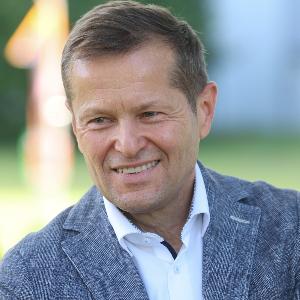The Interpreter: Ferenc Krausz on attosecond physics
29 Apr 2024
LMU researchers unpack terms of art that have gone mainstream.
29 Apr 2024
LMU researchers unpack terms of art that have gone mainstream.
Some technical terms have made it into everyday discourse. In this series, LMU researchers explain what these expressions mean and give a brief account of how they entered the vernacular.
Ferenc Krausz: “The wingbeat of a fly takes an eternity compared to the timescales attosecond physicists contend with. Indeed, they grapple with the fastest processes known in nature outside of the atomic nucleus. We’re talking about processes that last a few attoseconds – that is to say, billionths of a billionth of a second, or 10-18 seconds. The prefix “atto” is derived from the Danish word “atten,” meaning 18.

Nobel Prize winner Prof. Ferenc Krausz holds the Chair of Experimental Physics – Laser Physics at LMU. | © picture alliance/dpa | Karl-Josef Hildenbrand
In our Attoworld team, which consists of scientists from LMU and the Max Planck Institute of Quantum Optics, we’re interested in the behavior of electrons in atoms, but also in molecules and solid-state systems. When light strikes the electrons in atoms, they receive energy and make leaps that occur at astonishing speeds, somewhere between ten and a few hundred attoseconds.
Biotechnological progress has allowed scientists to work with these meagre quantities of DNA molecules. Perhaps the most important method is the polymerase chain reactionTo explore these dynamics, measurements have to be just as fast as the electrons. Our team accomplished this in the early years of the new millennium using flashes of light, which themselves lasted just a few tens of attoseconds. We first managed to generate these flashes in 2001. Later, we shot two light flashes at samples, the first setting electrons bound to atoms in motion and the second influencing this movement. We did so in such a way that we could measure the processes; we “photographed” the electrons in their motion. The shorter the light pulses, the sharper the images of the ultra-speedy elementary particles.
Today, we don’t need attosecond light flashes anymore. Instead, our measurements are based on the fact that every physical process that plays out on the attosecond scale and which we can precisely start can itself assume the role of a camera with an attosecond shutter speed. Without recourse to light flashes, we now measure the oscillating electrical field of a light wave with attosecond precision.
In nature and in technology, the movements of electrons play a fundamental role. They induce chemical reactions, bind atoms together to make molecules, and help transmit information and neural stimuli in organisms. In solid states, electrons move in a crystal lattice. This is what gives metals and semiconductors their electrical conductivity. Information technology uses electrons to transmit data. No computer chip will ever calculate faster than electrons move.
In the long term, however, it could become possible to accelerate information and data transmission by a factor of 100.000 compared to today’s speeds by means of light-driven electronics. Such an exciting prospect was a major reason for my being awarded the Nobel Prize in 2023 with my colleagues Pierre Agostini and Anne L’Hullier. That is the highest honor for me. My hope is that it will inspire young people to take up this research field.”
Professor Ferenc Krausz is Chair of Experimental Physics – Laser Physics at LMU and Director of the Max Planck Institute of Quantum Optics in Garching. He was awarded the Nobel Prize in Physics in 2023 .